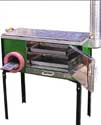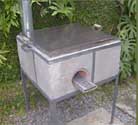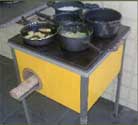A Visual Guide to Building The Estufa Justa (English and Spanish)
Jim Wilmes, Una-Familia, Trees Water and People
Step By Step Instructions for building a Justa stove by Jim Wilmes, Unafamilia, volunteer for Aprovicho and Trees Water and People
The Justa stove, named for Doña Justa Nuñez of Suyapa, Honduras who helped to design it, is one of many varieties of stoves that use a technology called the "rocket elbow" invented by Dr. Larry Winiarski. The category of stoves is often referred to as "rocket stoves". They are simple biomass stoves built around an insulated, elbow-shaped combustion chamber which provides more intense heat and cleaner combustion than an open fire, while consuming less fuel. In the Justa stove the elbow is formed from two ceramic cylinders made of a mixture of clay, manure and tree resin. Ashes or pumice are usually used for insulation.
The Justa stove has a sealed metal plancha that sits above a stove made of bricks, and a chimney that carries the smoke outside. Other models of rocket stoves may have holes in the plancha. Below the chimney there is a channel that catches the soot that falls down when the chimney is cleaned, so that it can be removed from the stove. One can cook tortillas directly on the metal surface, and cook other foods in metal or enamel pots. The stove is generally built on some type of base that serves as a place to temporarily store firewood or food items that are being prepared. A simple base can be made from concrete blocks and filled with earth. The following pictures show the process that is used in Suyapa, Honduras by the Honduran Development Association (AHDESA) to build the stove. Although most of the people building the demonstration stove in these pictures are men, it is generally the women of the community who build the stoves in Suyapa.




